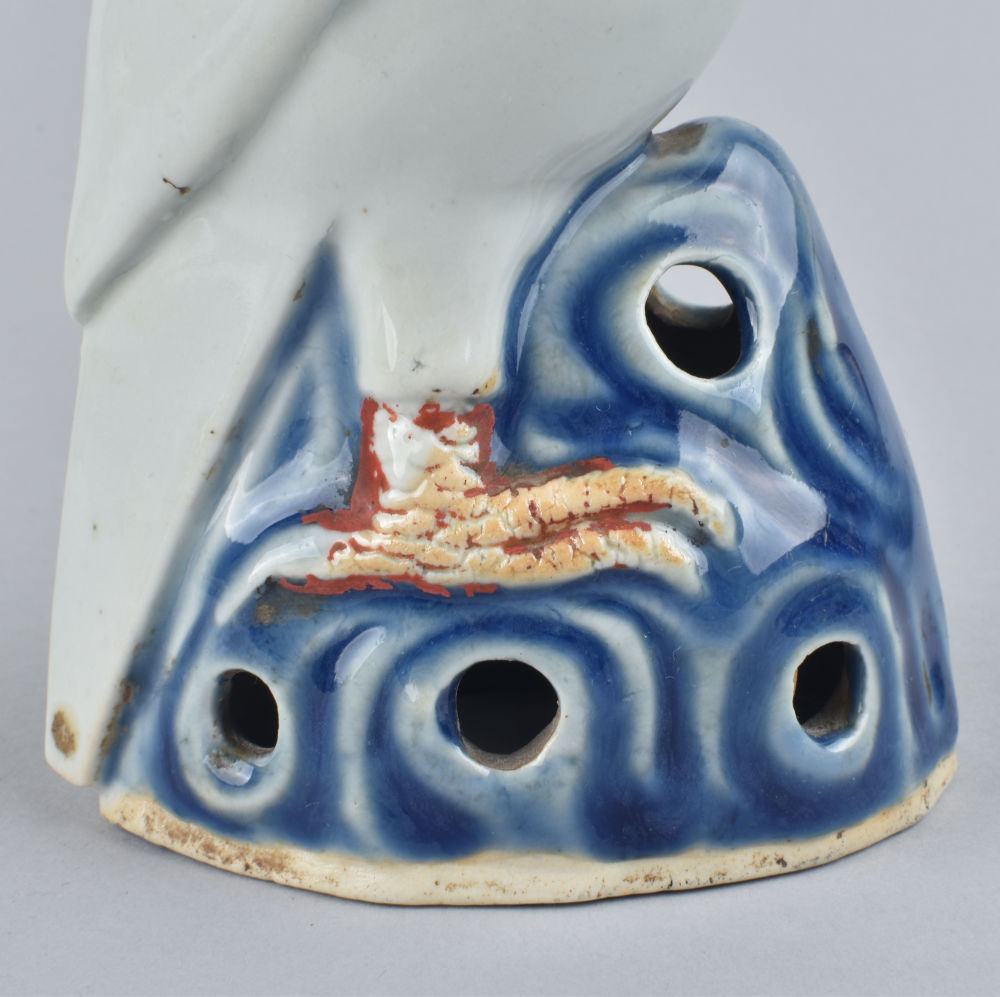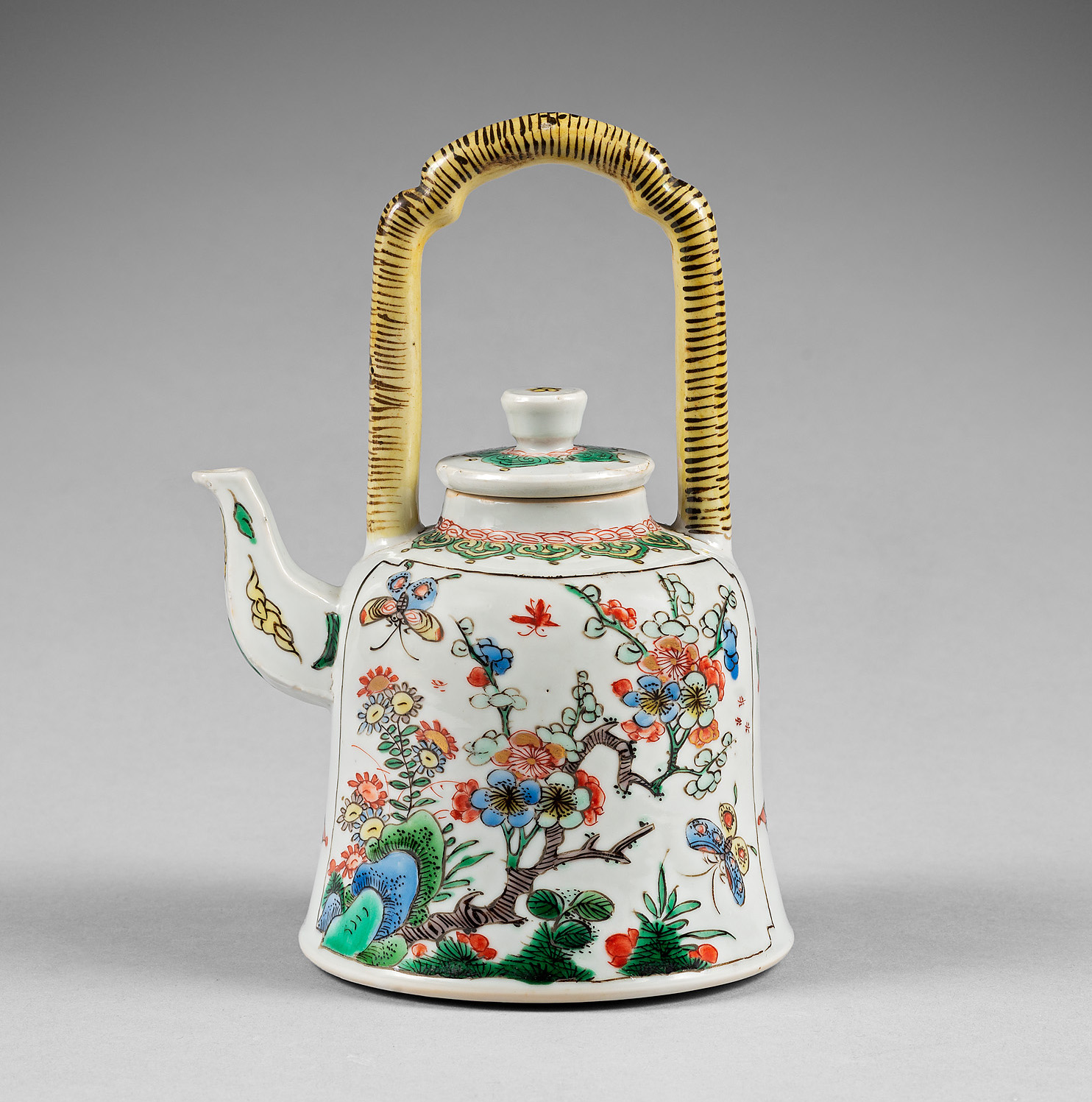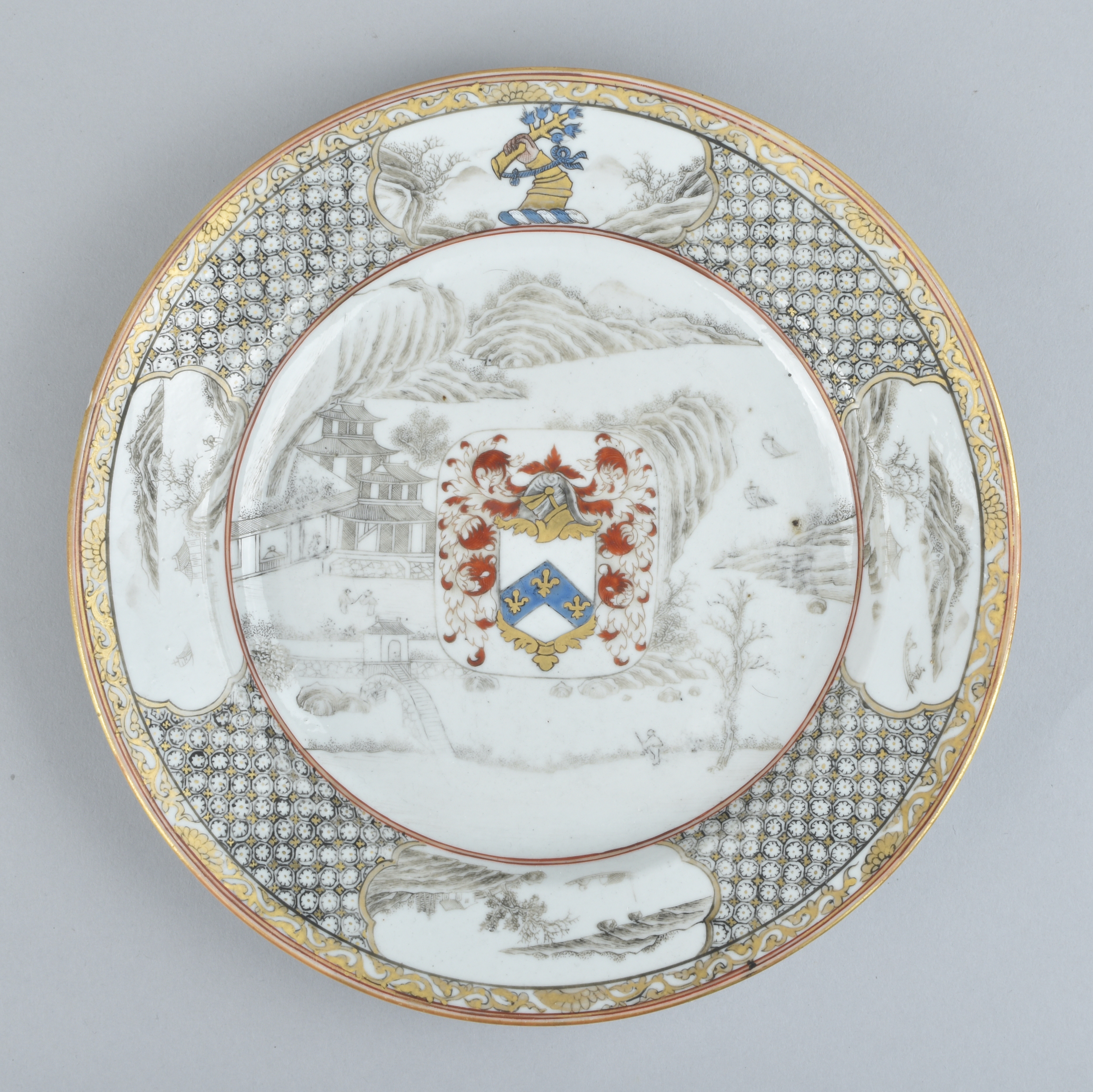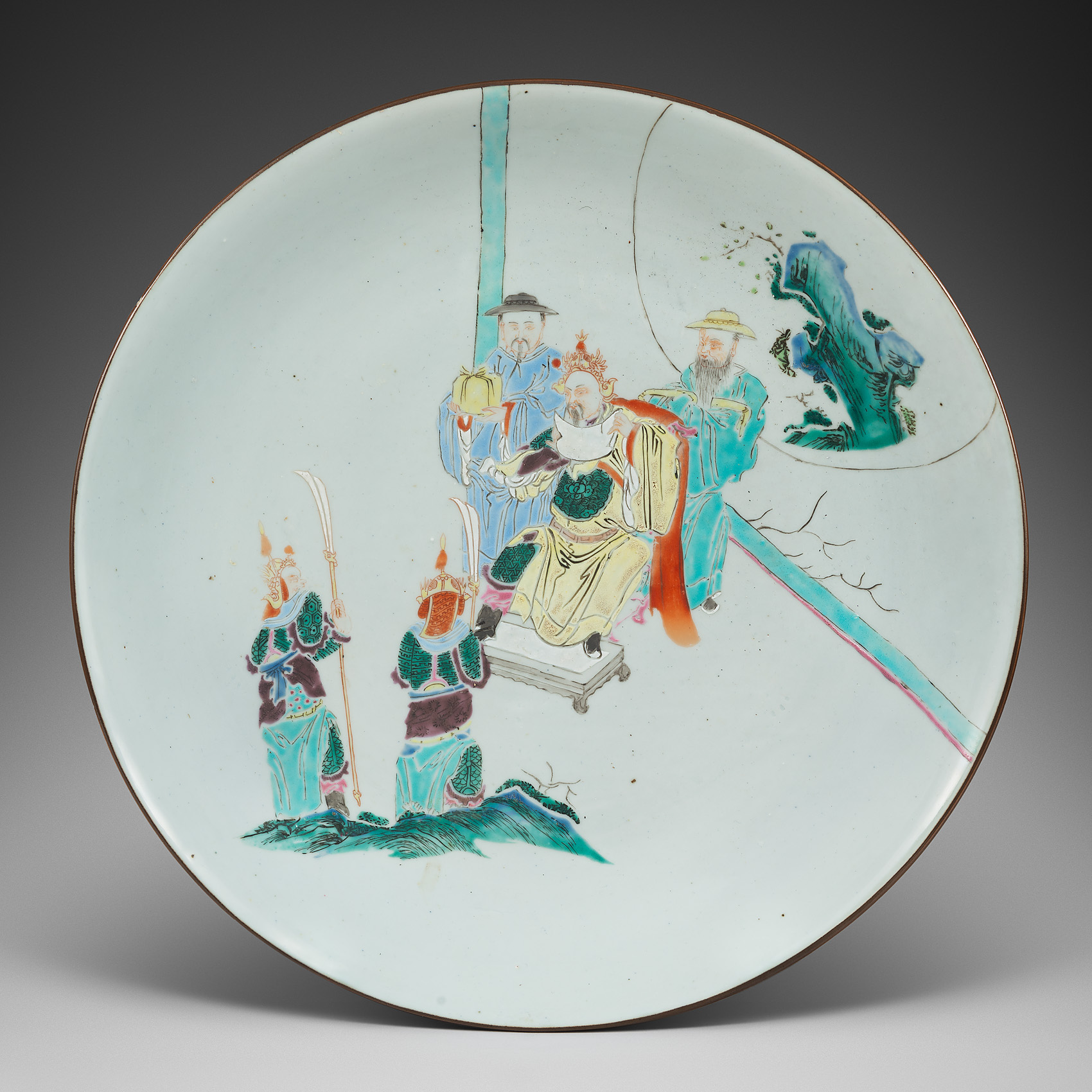




A Chinese figure of a parrot. Kangxi
A biscuit figure of a parrot, naturalistically moulded in two halves, perched on a pierced rock work base and with folded wings. Its head is turned slightly to the left and the beak is open. The body kept white, traces of vermillon can be seen of the beak, eyes, and claws. The hollow rock-work base is covered with a dark-blue glaze.
- Country:
- China
- Period :
- Kangxi (1662-1722)
- Material:
- Porcelain (decorated with blue and brown glazes)
- Dimension:
- 7.28 in. (18.5 cm)
- Reference :
- D104
- Status:
- sold
Provenance
Private French collection (two labels at the back, one in Chinese - one 'No. 700 - Kangshi')
Notice
In China, parrots are found in the wild in the warmer southern provinces. Other birds of the same genus such as macaws, cockatoos and parakeets, were imported and kept as caged bird in China for thousands years. In the Tang dynasty (618-907), exotic birds were brought to the imperial court from Indochina and Indonesia. Emperor Xuanzong adopted a talking parrot as a pet and Emperor Taizong commissioned a rhapsody to be written about his own prized parrot.
They have fascinated Europeans, as the exotic birds themselves were introduced as domestic pets during the lat fifteenth and early sixteenth century, living curiosities acquired during the explorations of Asia and America. Parrots were much admired for their colorful plumage, their art of mimicry and their longevity. Parrots were depicted in the still-life paintings of the seventeenth century, along with underglaze blue porcelains and exotic fruits from China and others ports.
During Kangxi reign (1662-1722), parrot depicted in various colors of porcelain, were popular in the West because of their vibrant and exotic appearance. During the 18th century, the taste for parrots was further encouraged by the fashion for exotic orientalist, when having live parrots was also popular. Models of small parrots were found in the VOC wreck Oosterland which sank in 1697
Well known in biscuit decorated with famille verte enamels, parrots covered with blue glaze are unusual. Among early examples of famille verte parrots are those mounted in gilt bronze as part of chandeliers which were installed royal European castles, at the palace of Versailles.

























